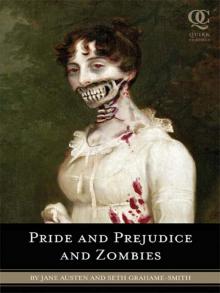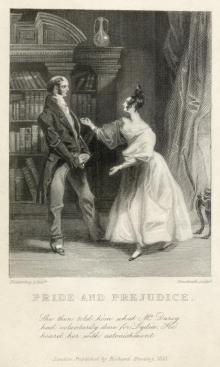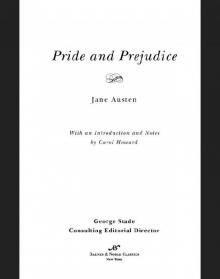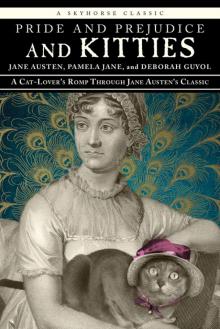- Home
- Jane Austen
Lady Susan, the Watsons, Sanditon Page 4
Lady Susan, the Watsons, Sanditon Read online
Page 4
The rather unsympathetic, hard, unsubtle nature of the satire in Sanditon is surely best explained by its author's state of health. She has returned to an almost eighteenth-century view of man as a being dominated by a ruling passion - hypochondria, speculation, romance, avarice - and in consequence none of her characters, apart from the amiable Mr Parker, is very human or likeable. We know that she liked to view her characters as real people, imagining futures for them beyond the end of the book, even telling her family what would have happened in a book she did not finish, and declaring that Mrs Bingley liked green and Mrs Darcy liked yellow. It is not too much to speculate that, as she felt death approaching, she did not wish to create characters that she would feel pain at abandoning. Anne Elliot abandoned would have been a tragedy: Mr Parker left wondering is a joke. She was too ill to moralize in fiction, and cheered herself up by seeing the world as a joke: she comments on the change of manners in Miss Denham, obliged to flatter Lady Denham, by saying it was 'very striking - and very amusing - or very melancholy, just as satire or morality might prevail'. In this fragment, she chooses to let satire prevail, and the novel ends unfinished, appropriately, with a posthumous joke played by Lady Denham upon the dead.
FURTHER READING
Austen, Jane, Catharine and Other Writings, ed. Margaret Anne Doody and Douglas Murray (1993) Copeland, Edward and McMaster, Juliet, (eds.), The Cambridge Companion to Jane Austen (1997) Chapman, R. W., (ed.), The Oxford Illustrated Jane Austen: Volume VI, Minor Works (1954) Butler, Marilyn, Jane Austen and the War of Ideas (1975) Halperin, John, The Life of Jane Austen (1996)
Honan, Park, Jane Austen: Her Life (1987)
Leavis, Q. D., 'A Critical Theory of Jane Austen's Writings', published in Scrutiny, Volume X, No. 2, 1941-2, reprinted in Collected Essays, Volume 1, by Q. D. Leavis, ed. G Singh, (1983). These are the essays in which Q. D. Leavis argued that Lady Susan was developed into Mansfield Park, and The Watsons into Emma.
Le Faye, Deirdre, Jane Austen: A Family Record (1989) -- (ed.), Jane Austen's Letters (1995)
Southam, Brian, Jane Austen's Literary Manuscripts (1964) -- Jane Austen, The Critical Heritage (2 vols., 1968, 1987) Tanner, Tony, Jane Austen (1986). This volume contains his important essay on 'The Disease of Activity: Sanditon'.
Tomalin, Claire, Jane Austen: A Life (1997)
SOCIAL BACKGROUND
JANE AUSTEN's characters are as interested as she is in proper behaviour and social distinctions, and some notes on the contemporary significance of some of the symbols of social status used in the novels might be useful.
First of all, there is the question of the carriage. It was clearly as important to an eighteenth-century gentleman to have the right kind of transport as it is for the modern one to have the right make of car. The Watsons, we note, are too poor to have anything but an open cart and one tired old horse, tame enough for the girls to manage alone. Tom Musgrave, on the other hand, has a curricle, a superior aristocratic vehicle in keeping with his youth and independent income. A curricle was a fast, light, two-wheeled carriage drawn by two horses abreast: Emma with some reason fears that Tom may be tempted to drive too fast in it in order to show himself and his horses off. Sir Edward in Sanditon, on the other hand, has merely a simple gig, which reflects his small income. A gig was also light and two-wheeled, but it was drawn by one horse only, and there were some very inferior commercial and family gigs on the roads. The Edwards had a family carriage, with two horses, which would have been covered and comfortable; Sidney Parker, the hero-to-be of Sanditon, is described merely as having a 'very neat carriage' - in other words, a carriage which was smart but not too showy. Other vehicles mentioned in these texts include the phaeton, which was a light, four-wheeled, two-horse open carriage; the tandem, which was pulled by two horses, one before the other; and the hack-chaise, which brought Mrs Griffiths to Sanditon, and which was simply the hack (or hired) postchaise.
Another point which could be usefully made about travel at this period is that it was both dirty and dangerous. We tend to think of horse vehicles as being safer than the automobile, and consequently we tend to view road accidents in eighteenth-and nineteenth-century novels as narrative conveniences, rather than as realistic occurrences. But we are probably wrong, even statistically. There are several accidents in Jane Austen's novels: Sanditon, uncharacteristically, opens dramatically with one. In this, Jane Austen was reflecting her own experience. There had been two deaths in her immediate circle. In 1798 her cousin Jane Williams, driving herself in a one-horse chaise, had been thrown out and killed after colliding with a dray horse, and in 1804 her close friend Anne Lefroy was killed by a fall from a horse, an event which stirred her to write an unusually emotional poem in commemoration.
The roads, of course, were in many places poor, in some impassable. The Parkers in Sanditon had clearly attempted a road far too poor for their carriage, and Robert Watson in The Watsons complains about the state of the village road through Stanton, describing it as 'infamous'. The toll system had been introduced to improve travelling conditions, but it was not until 1815 that the new techniques for road building and road surfacing pioneered by engineers Thomas Telford and John McAdam began to make a substantial difference. Village roads were still extremely muddy and dirty. We may admire Elizabeth Bennet for not minding about getting her skirts muddy, and find the Darcy and Bingley women ridiculous for making such a fuss about it, but eighteenth-century mud was much more substantial than our own, and long skirts picked it up more. One can appreciate the pleasure that Mrs Edwards felt in noticing that her new satin dress was sweeping along a clean floor, not a dirty one. The Austen family wore pattens when young, to negotiate the country lanes round Steventon, a practice which seemed archaic and vulgar to Jane Austen's nephew. One can share Emily's amusement at Lord Osborne's recommending her to wear pale yellow boots for a country walk.
The nature of one's equipage provided one delicate social marker. Mealtimes provided another. What time was dinner time? Tom Musgrave and the Osbornes are fashionable, therefore they keep late hours. The Edwards and the Tomlinsons are country folk, so they get to the assembly too early. The Watsons dine off a tray in the dining-room at three o'clock in the afternoon, whereas Tom Musgrave never dines before eight. When, one asks oneself, was the proper hour for dinner, and the proper hour for supper? It's a question that is hard to answer. In the first half of the eighteenth century, dinner was at twelve: country folk rose at dawn, dined at twelve, supped in the evening, and presumably went to bed early when the light failed. But by the later years of the century, late hours were becoming more and more fashionable. In 1777, Horace Walpole wrote 'Everything is changed... I do not like dining at nearly six, nor beginning the evening at ten at night. If one does not conform, one must live alone' - and, again, 'The present folly is late hours. Everybody tries to be particular by being too late...' (Letters to Mann, Vol. 3). Late hours were a town habit, and resulted partly from the longer and longer sittings in the House of Commons, but the mode was evidently spreading to the country. Jane Austen, as usual, distrusts and mocks town manners, and makes fun of Tom Musgrave's passion for late meals. At the same time, she does not wholly approve of Lady Denham's insistence on the virtue of her own old-fashioned early hours, and has some sympathy for Mr Edwards' desire for a late game of cards, and for the desire of Emma and Mary Edwards to get the most out of a ball by staying on till the end. She was not critical of enjoyment - she was critical of affectation, and quick to note its new and changing forms. As her nephew wrote in his Memoir, it is difficult to mark the exact point at which manners change: 'Who will be able to fix, twenty years hence, the date when our dinners began to be carved and handed round by servants, instead of smoking before our eyes and noses on the table?' Who indeed? And yet Jane Austen herself has done more than most historians to catch the slight shifts of practice and of attitude.
In The Watsons, the men are still powdering their hair, which marks another turning-point in behaviour. For by the ti
me she wrote it, presumably in 1804-5, hair powder was ceasing to be the fashion. Elizabeth Watson tells her sister proudly that the Edwards's footman will have livery and a powdered head, and later in the work, we find Mrs Robert Watson criticizing her husband for not putting any fresh powder in his hair. Robert Watson himself later apologizes to the fashionable Tom Musgrave for this careless lack of powder, so one must assume either that the Watsons and Osbornes moved in a circle where powder was still the vogue, or that Jane Austen has set her novel in the past. The fashion began to die out at the end of the eighteenth century, hastened by young radicals who refused to wear it for political reasons, and by Pitt's tax of 1795 on hair powder. The fact that Robert Watson is still wearing it, without any apparent comment from Jane Austen, is of interest, but it is hard to know whether she is describing a still universal or a dying custom, whether she is setting her novel in the past, or whether she is (as so often) upholding tradition in the face of change.
It is in Sanditon, of course, that she most attacks change. She makes fun of the vogue for anything new or foreign - cottages ornees, blue shoes, Venetian windows, French windows, new words, new buildings. One can well imagine that the canvas awning of which Mr Parker is so proud was the height of trend-setting fashion in its day. And yet she herself did not live in the past. She liked sea bathing, she read new books, she got on well with young people. And one can even detect in Sanditon (as I have mentioned above) a new life that welcomes the change it seems to be mocking.
A NOTE ON THE TEXT
THIS TEXT is based on R. W. Chapman's editions, which he took from Jane Austen's manuscripts. Lady Susan, The Watsons and Sanditon appear, along with other minor works, in Volume Six of The Oxford Illustrated Jane Austen (1954). These printed versions have been compared with R. W. Chapman's own earlier single editions, printed respectively in 1923, 1927 and 1925, and where there are any interesting erasures or variations recorded, I have mentioned them in the notes, though I have by no means given a complete record of every slight first or second thought.
Lady Susan is little altered from Chapman's version, though I have modernized most of the archaic spelling, and removed capital letters and unnecessary punctuation. ('Her's' has become 'hers', for example.) Jane Austen herself made a fair copy of this work, on paper watermarked 1805, though the book was probably written considerably earlier, so we can assume that the version we have is the version she would have wanted us to read. I have left one or two of her eccentricities of spelling, such as her hesitations over 'Adieu', and I have expanded her abbreviated signatures - though no doubt it was common enough to sign oneself off as 'Yrs Affectly' or 'Yrs ever'. The text has no obscurities.
The Watsons and Sanditon present quite different problems to the editor. She made no fair copies of them, and the manuscripts are far more complex, full of insertions and erasures and abbreviations. Moreover, they are in modern narrative form, rather than in the already faintly archaic epistolary form. Chapman has reproduced them with all the author's inconsistencies, but after much deliberation and doubt, I have made certain alterations which I hope will make them easier for the general reader. First of all, I have paragraphed them. The manuscripts are completely un-paragraphed, which tends to make them rather forbidding to the eye used to a broken page, and we can be sure that they would have been paragraphed if printed in her lifetime, like her other books. I have also filled in her abbreviations: like any author in a hurry, she constantly writes 'Mrs E.' for Mrs Edwards, 'Miss H.' for Miss Heywood, etc. More hesitantly, I have removed most of the capital letters with which she liberally sprinkles her work. She uses them herself without much sense of consistency, often omitting them in the very case where we might still use them - as in 'Assembly', or 'Assembly Room', for instance. So I have used capitals only where we would have used them, or to point some very particular eccentricity on the part of a speaker. The spelling, too, I have, on the whole, modernized, while leaving one or two of her more persistent versions, such as 'agreable' for 'agreeable': in this instance her version seems more acceptable and logical than our own. I have also left the one instance where she spells sofa as 'sopha'. Some of these decisions, obviously, were difficult, and I have left record of the more difficult in the notes. Clarity has been my aim.
The punctuation presented the greatest problem of all. The manuscripts of The Watsons and Sanditon are highly irregular - some speeches appear in inverted commas, some do not, some of her dashes clearly indicate a paragraph break, whereas others clearly do not. There are full stops followed by lower-case letters, and at least one semi-colon which I think was misplaced. What I finally decided upon was a compromise. Inverted commas were inserted to indicate conversations, and dashes were omitted where they have been replaced by paragraph spacing. The apostrophe which Austen usually places after the possessive 'its' has been omitted, and one or two possessive apostrophes have been inserted when their absence made the sense obscure. All the rest of her punctuation, with its numerous dashes and oddities, is her own. Obviously one could have tidied it up more, and she would probably have done so herself for publication, or a printer would have done it for her, but there would have been a risk in some instances of losing both her sense and her flavour. One of the most remarkable features of Sanditon is its difference in style from earlier works, and the number of dashes which appear in it may have been intentional rather than the effect of fast or unrevised writing. So, while I hope I have provided a text which is easy to read, and which does justice to the value of these fragments as interesting stories rather than literary curiosities, I have not dared to alter them too much. Even so, I am certain to have altered them too much for some purists. I can only refer them back to Chapman.
LADY SUSAN
Letter 1
LADY SUSAN VERNON TO MR VERNON
Langford, December
My dear brother,
I can no longer refuse myself the pleasure of profiting by your kind invitation when we last parted, of spending some weeks with you at Churchill, and therefore if quite convenient to you and Mrs Vernon to receive me at present, I shall hope within a few days to be introduced to a sister whom I have so long desired to be acquainted with. My kind friends here are most affectionately urgent with me to prolong my stay, but their hospitable and cheerful dispositions lead them too much into society for my present situation and state of mind; and I impatiently look forward to the hour when I shall be admitted into your delightful retirement I long to be made known to your dear little children, in whose hearts I shall be very eager to secure an interest I shall soon have occasion for all my fortitude, as I am on the point of separation from my own daughter. The long illness of her dear father prevented my paying her that attention which duty and affection equally dictated, and I have but too much reason to fear that the governess to whose care I consigned her, was unequal to the charge. I have therefore resolved on placing her at one of the best private schools in town, where I shall have an opportunity of leaving her myself, in my way to you. I am determined you see, not to be denied admittance at Churchill. It would indeed give me most painful sensations to know that it were not in your power to receive me.
Your most obliged and affectionate sister
Susan Vernon
Letter 2
LADY SUSAN TO MRS JOHNSON
Langford
You were mistaken my dear Alicia, in supposing me fixed at this place for the rest of the winter. It grieves me to say how greatly you were mistaken, for I have seldom spent three months more agreeably than those which have just flown away. At present nothing goes smoothly. The females of the family are united against me. You foretold how it would be, when I first came to Langford; and Manwaring is so uncommonly pleasing that I was not without apprehensions myself. I remember saying to myself as I drove to the house, 'I like this man; pray Heaven no harm come of it!' But I was determined to be discreet, to bear in mind my being only four months a widow, and to be as quiet as possible, - and I have been so; my dear creature, I have ad
mitted no one's attentions but Manwaring's, I have avoided all general flirtation whatever, I have distinguished no creature besides of all the numbers resorting hither, except Sir James Martin, on whom I bestowed a little notice in order to detach him from Miss Manwaring. But if the world could know my motive there, they would honour me. I have been called an unkind mother, but it was the sacred impulse of maternal affection, it was the advantage of my daughter that led me on; and if that daughter were not the greatest simpleton on earth, I might have been rewarded for my exertions as I ought. - Sir James did make proposals to me for Frederica - but Frederica, who was born to be the torment of my life, chose to set herself so violently against the match, that I thought it better to lay aside the scheme for the present. I have more than once repented that I did not marry him myself, and were he but one degree less contemptibly weak I certainly should, but I must own myself rather romantic in that respect, and that riches only, will not satisfy me. The event of all this is very provoking. Sir James is gone, Maria highly incensed, and Mrs Manwaring insupportably jealous; so jealous in short, and so enraged against me, that in the fury of her temper I should not be surprised at her appealing to her guardian if she had the liberty of addressing him - but there your husband stands my friend, and the kindest, most amiable action of his life was his throwing her off forever on her marriage. Keep up his resentment therefore I charge you. We are now in a sad state; no house was ever more altered; the whole family are at war, and Manwaring scarcely dares speak to me. It is time for me to be gone; I have therefore determined on leaving them, and shall spend I hope a comfortable day with you in town within this week. If I am as little in favour with Mr Johnson as ever, you must come to me at No. 10, Wigmore St - but I hope this may not be the case, for as Mr Johnson with all his faults is a man to whom that great word 'Respectable' is always given, and I am known to be so intimate with his wife, his slighting me has an awkward look. I take town in my way to that insupportable spot, a country village, for I am really going to Churchill. Forgive me my dear friend, it is my last resource. Were there another place in England open to me, I would prefer it Charles Vernon is my aversion, and I am afraid of his wife. At Churchill however I must remain till I have something better in view. My young lady accompanies me to town, where I shall deposit her under the care of Miss Summers in Wigmore Street, till she becomes a little more reasonable. She will make good connections there, as the girls are all of the best families. The price is immense, and much beyond what I can ever attempt to pay.

 Sense and Sensibility
Sense and Sensibility Persuasion
Persuasion Mansfield Park
Mansfield Park Northanger Abbey
Northanger Abbey Pride and Prejudice and Zombies
Pride and Prejudice and Zombies Pride and Prejudice
Pride and Prejudice Emma
Emma Persuasion (Dover Thrift Editions)
Persuasion (Dover Thrift Editions) Lady Susan
Lady Susan Northanger Abbey (Barnes & Noble Classics)
Northanger Abbey (Barnes & Noble Classics) Lady Susan, the Watsons, Sanditon
Lady Susan, the Watsons, Sanditon Darcy Swipes Left
Darcy Swipes Left Persuasion: Jane Austen (The Complete Works)
Persuasion: Jane Austen (The Complete Works) Mansfield Park (Barnes & Noble Classics Series)
Mansfield Park (Barnes & Noble Classics Series) Sense and Sensibility (Barnes & Noble Classics Series)
Sense and Sensibility (Barnes & Noble Classics Series) The Annotated Sense and Sensibility
The Annotated Sense and Sensibility Pride and Prejudice (Clandestine Classics)
Pride and Prejudice (Clandestine Classics) Persuasion (AmazonClassics Edition)
Persuasion (AmazonClassics Edition) Persuasion (Barnes & Noble Classics Series)
Persuasion (Barnes & Noble Classics Series) Complete Works of Jane Austen
Complete Works of Jane Austen The Watsons and Emma Watson
The Watsons and Emma Watson Northanger Abbey and Angels and Dragons
Northanger Abbey and Angels and Dragons Love and Friendship and Other Early Works
Love and Friendship and Other Early Works Emma (Barnes & Noble Classics Series)
Emma (Barnes & Noble Classics Series) Sanditon
Sanditon Pride and Prejudice (Barnes & Noble Classics Series)
Pride and Prejudice (Barnes & Noble Classics Series) Pride and Prejudice and Kitties
Pride and Prejudice and Kitties The Annotated Northanger Abbey
The Annotated Northanger Abbey Oxford World’s Classics
Oxford World’s Classics Northanger Abbey (Barnes & Noble Classics Series)
Northanger Abbey (Barnes & Noble Classics Series) The Annotated Persuasion
The Annotated Persuasion Emma (AmazonClassics Edition)
Emma (AmazonClassics Edition) The Annotated Emma
The Annotated Emma The Annotated Mansfield Park
The Annotated Mansfield Park The Annotated Pride and Prejudice
The Annotated Pride and Prejudice